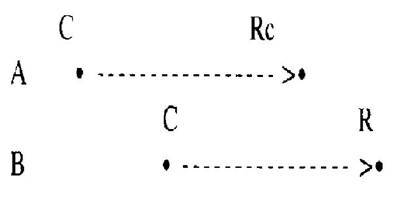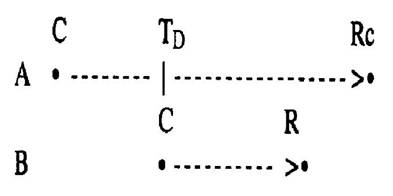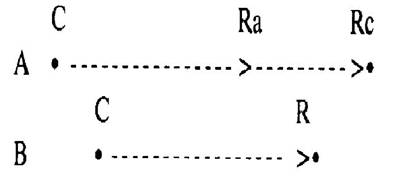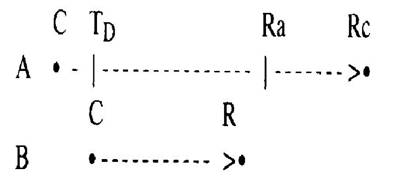2138.01 Interference Practice
![]()
![]() This MPEP section has limited applicability to applications subject to examination under the first inventor to file (FITF) provisions of the AIA.
This MPEP section has limited applicability to applications subject to examination under the first inventor to file (FITF) provisions of the AIA.
|
I. Pre-AIA 35 U.S.C. 102(g) IS THE BASIS OF INTERFERENCE PRACTICE
Subsection (g) of pre-AIA 35 U.S.C. 102 is the basis of interference practice for determining priority of invention between two parties.
An interference is an inter partes proceeding directed at determining the first to invent as among the parties to the proceeding, involving two or more pending applications naming different inventors or one or more pending applications and one or more unexpired patents naming different inventors.
- The first of many to reduce an invention to practice around the same time will be the sole party to obtain a patent, unless another was the first to conceive and couple a later-in-time reduction to practice with diligence from a time just prior to when the second conceiver entered the field to the first conceiver’s reduction to practice.
- Upon conclusion of an interference, subject matter claimed by the losing party that was the basis of the interference is rejected under pre-AIA 35 U.S.C. 102(g), unless the acts showing prior invention were not in this country.
It is noted that 35 U.S.C. 101 requires that whoever invents or discovers is the party who may obtain a patent for the particular invention or discovery.
35 U.S.C. 111 (applicant) or 35 U.S.C. 116 (applicants) set forth the requirement that the actual inventor(s) be the party who applies for a patent or that a patent be applied for on behalf of the inventor.
- Where it can be shown that an applicant has “derived” an invention from another, a rejection under pre-AIA 35 U.S.C. 102(f) is proper.
II. PRIORITY TIME CHARTS
The following priority time charts illustrate the award of invention priority in several situations.
The time charts apply to interference proceedings and are also applicable to declarations or affidavits filed under 37 CFR 1.131 to antedate references which are available as prior art under pre-AIA 35 U.S.C. 102(a) or 102(e).
- For purposes of analysis under 37 CFR 1.131, the conception and reduction to practice of the reference to be antedated are both considered to be on the effective filing date of domestic patent or foreign patent or the date of printed publication.
In the charts, C = conception, R = reduction to practice (either actual or constructive), Ra = actual reduction to practice, Rc = constructive reduction to practice, and TD = commencement of diligence.
Example 1

A is awarded priority in an interference, or antedates B as a reference in the context of a declaration or affidavit filed under 37 CFR 1.131, because A conceived the invention before B and constructively reduced the invention to practice before B reduced the invention to practice. The same result would be reached if the conception date was the same for both inventors A and B.
Example 2

A is awarded priority in an interference, or antedates B as a reference in the context of a declaration or affidavit filed under 37 CFR 1.131, if A can show reasonable diligence from TD (a point just prior to B’s conception) until Rc because A conceived the invention before B, and diligently constructively reduced the invention to practice even though this was after B reduced the invention to practice.
Example 3

A is awarded priority in an interference in the absence of abandonment, suppression, or concealment from Ra to Rc, because A conceived the invention before B, actually reduced the invention to practice before B reduced the invention to practice, and did not abandon, suppress, or conceal the invention after actually reducing the invention to practice and before constructively reducing the invention to practice.
A antedates B as a reference in the context of a declaration or affidavit filed under 37 CFR 1.131 because A conceived the invention before B and actually reduced the invention to practice before B reduced the invention to practice.
Example 4

A is awarded priority in an interference if A can show reasonable diligence from TD (a point just prior to B’s conception) until Ra in the absence of abandonment, suppression, or concealment from Ra to Rc, because A conceived the invention before B, diligently actually reduced the invention to practice (after B reduced the invention to practice), and did not abandon, suppress, or conceal the invention after actually reducing the invention to practice and before constructively reducing the invention to practice.
A antedates B as a reference in the context of a declaration or affidavit filed under 37 CFR 1.131 because A conceived the invention before B, and diligently actually reduced the invention to practice, even though this was after B reduced the invention to practice.
III. 37 CFR 1.131 DOES NOT APPLY IN INTERFERENCE PROCEEDINGS
Interference practice operates to the exclusion of ex parte practice under 37 CFR 1.131 which permits an applicant to show an actual date of invention prior to the effective date of a reference or activity applied under pre-AIA 35 U.S.C. 102 or 103, as long as the reference is not a statutory bar under pre-AIA 35 U.S.C. 102(b) or a U.S. patent application publication claiming the same patentable invention.
IV. LOST COUNTS IN AN INTERFERENCE ARE NOT, PER SE, STATUTORY PRIOR ART
Loss of an interference count alone does not make its subject matter statutory prior art to losing party; however, lost count subject matter that is available as prior art under 35 U.S.C. 102 may be used alone or in combination with other references under 35 U.S.C. 103.

